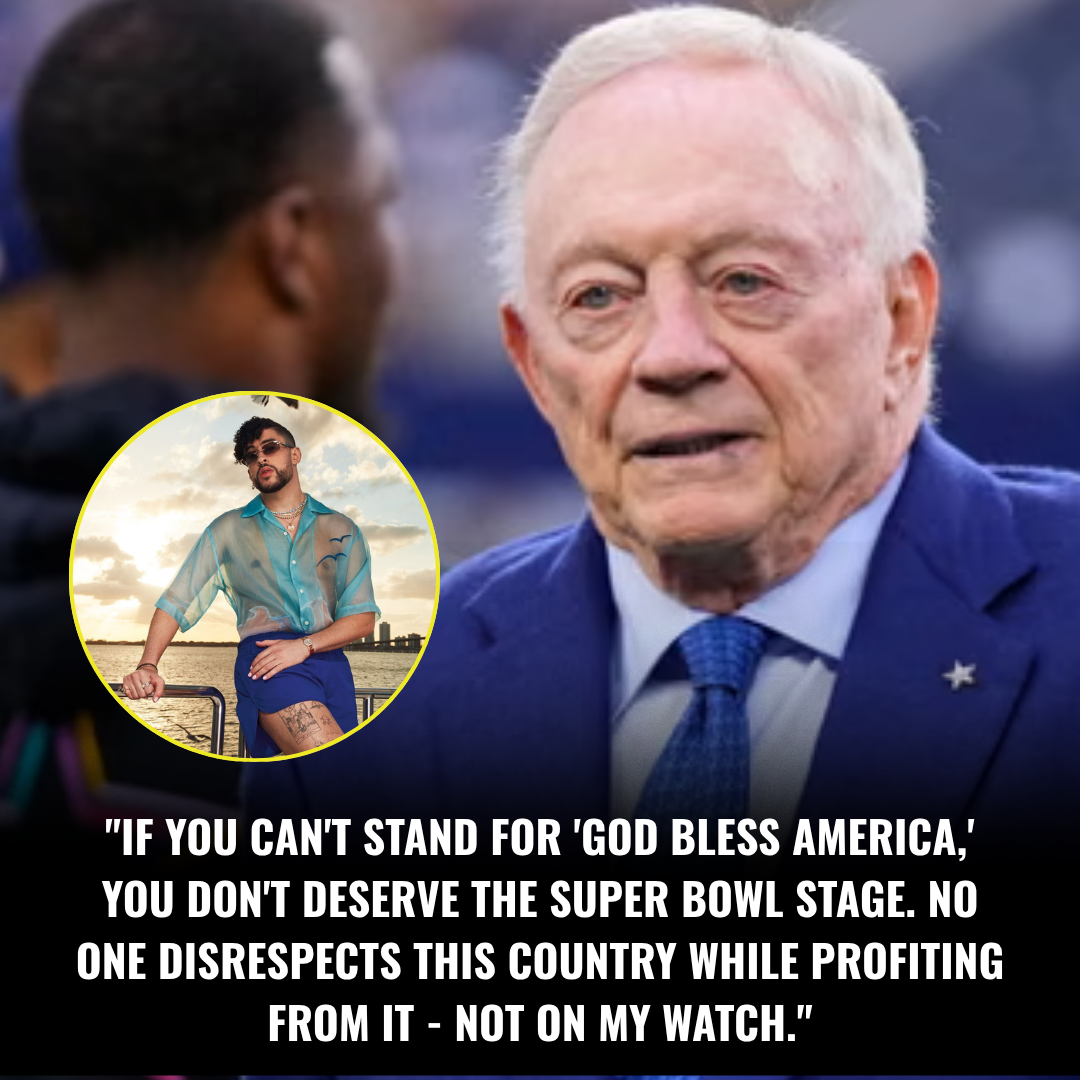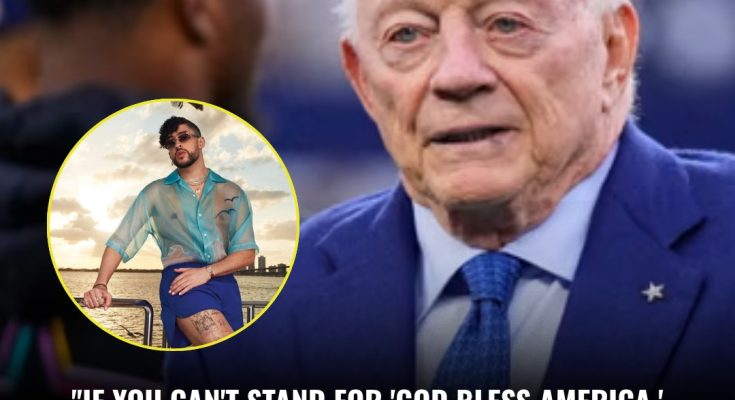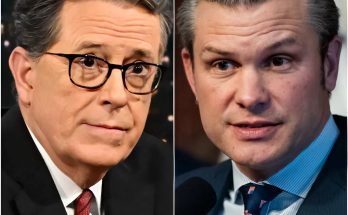
Jerry Jones Condemns Bad Bunny Over Yankee Stadium Incident, Vows to Block Super Bowl Halftime Headline

Dallas Cowboys owner Jerry Jones ignited a fresh culture-war firestorm after sharply criticizing Bad Bunny for remaining seated during “God Bless America” at Yankee Stadium, calling the gesture “an insult to every man and woman who’s ever worn this nation’s uniform.” In remarks that quickly ricocheted through sports and entertainment circles, Jones said he would use “every means available” to prevent the artist from headlining the upcoming Super Bowl halftime show. His bottom line was blunt: “If you won’t stand for America, you don’t belong on its biggest stage.”
The comments landed with the force of Jones’s decades-long influence inside NFL corridors and corporate suites. Supporters hailed his stance as a defense of tradition and respect for service members, arguing that the league’s marquis event should reflect unifying values rather than test cultural boundaries. Detractors countered that the Super Bowl has grown into a global celebration of American music that routinely crosses languages and styles, and that artists’ decisions about patriotic observances sit within the realm of personal expression.
League officials moved quickly to stress that halftime programming decisions involve multiple stakeholders, including the broadcast network, production partners, and the NFL’s own entertainment arm. While the league did not address Jones’s remarks directly, executives privately acknowledged the delicate balancing act: honoring patriotic ritual without policing artist conduct in ways that could invite legal, reputational, or logistical risks. Production insiders noted that headliner negotiations typically hinge on availability, creative direction, and broadcast logistics—not owner sentiment—though no one doubts that a voice as prominent as Jones’s can shape the discourse.
Sponsors tracked the fallout in real time. Major brands invested in Super Bowl week tend to prize predictability and broad appeal, steering carefully around flashpoints that could polarize their customer base. Marketers said the incident injects uncertainty into messaging plans but also provides a stress test for contingency scripts—acknowledging service, affirming inclusion, and keeping the spotlight on the game. “The Super Bowl is a tent big enough to fit disagreement,” one veteran executive noted. “The question is whether that disagreement overwhelms the event.”
Players and coaches publicly deflected, insisting their focus remains on rosters and schemes. Privately, several acknowledged that halftime controversies can seep into locker-room air, especially when they intersect with questions of identity, speech, and patriotism. Union representatives are likely to reiterate their long-standing position that political or cultural commentary from owners and performers should not impact workplace conditions for players.
Civil liberties advocates pointed to a familiar distinction: the difference between government restrictions on speech and the choices private entities make about their stages. Stadium etiquette is a powerful norm, they said, but it is not a legal mandate; responses to perceived disrespect—commercial, social, or contractual—are part of the private marketplace of ideas. The result, once again, is a national argument about what patriotism requires, what entertainment permits, and who gets to draw the line.
As for Bad Bunny’s camp, industry watchers expect a carefully calibrated response—either a clarifying statement about intent or a decision to let the music speak when it counts. For the NFL, the path forward will revolve around the same calculus that has defined the modern halftime era: deliver a spectacle that unites a vast audience without drowning the night in controversy. Jones, for his part, has made his position unmistakable. Whether it reshapes the show or simply reframes the debate, the countdown to kickoff just got louder.



